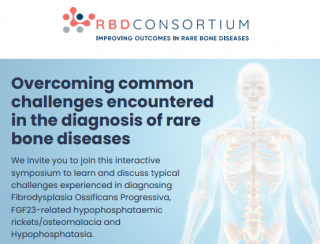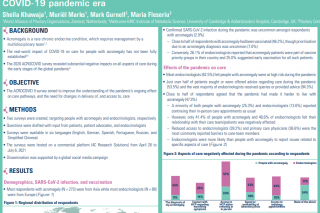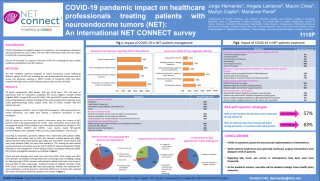
Safety of low levels of LDL-Cholesterol
Safety of low levels of LDL-Cholesterol
Dr. Jan Přeček
Dr. Jan Přeček reviews recommendations and safety considerations for lowering LDL-C levels

Dr. Jan Přeček
Cardiologist
University Hospital Olomouc
Czech Republic
Dr. Jan Přeček is cardiologist at University Hospital Olomouc, Czech Republic. He completed his medical degree and doctoral (Ph.D.) degree at Faculty of Medicine, Palacký University Olomouc. His main areas of clinical focus are acute cardiac care, echocardiography, acute coronary syndromes, heart failure and pulmonary circulation. Dr Přeček has been awarded Fellow of the European Society of Cardiology (FESC). He has participated in multiple clinical trials focused mainly to acute heart failure, antithrombotics, hypolipidemic therapy and pulmonary hypertension.
Dr. Jan Přeček has received financial support/sponsorship for research support, consultation, or speaker fees from the following companies:
|
5 min
|
Sep 2021
This programme was made for you: your opinion matters
Share your feedback in just 4 clicks and help us to continue to create the content you need.
I agree that this educational programme:
Was valuable to me:
1/4
Has improved my knowledge of this topic:
2/4
Is likely to change my clinical practice:
3/4
Was balanced and unbiased:
4/4
download resources
This programme was made for you: your opinion matters
Share your feedback in just 4 clicks and help us to continue to create the content you need.
I agree that this educational programme:
Was valuable to me:
1/4
Has improved my knowledge of this topic:
2/4
Is likely to change my clinical practice:
3/4
Was balanced and unbiased:
4/4
Hello on behalf of CORONARY CONNECT: my name is Jan Přeček. I’m a cardiologist from the University Hospital Olomouc in the Czech Republic. I’d like to talk about safety of low levels of LDL cholesterol (LDL-C).
LDL-C as a Risk Factor
Elevated LDL-C is a clearly established major risk factor for the development of atherosclerotic cardiovascular disease.
Risk reduction of atherosclerotic cardiovascular disease is proportional to the absolute and relative LDL-C reduction achieved. In other words, there seems to be no LDL-C threshold, below which no further atherosclerotic cardiovascular disease prevention can be achieved.
Treatment Goals
This is reflected in current guidelines of the European Society of Cardiology and the European Atherosclerosis Society for the Management of dyslipidaemias. Treatment goals for LDL-C were again shifted lower. The use of lipid-lowering drugs in sequential combination is recommended. Intensive lipid-lowering therapy, especially when PCSK9 inhibitors are used, allows very low levels of LDL-C to be achieved.
Supporting Physiological Evidence
But on the other hand, cholesterol plays an important role in human physiology. It’s a key component of many hormones and all cell membranes. So, there has been concern that maintaining LDL-C concentrations at very low levels may also have adverse consequences. I would like to mention two examples on this issue that do not confirm these concerns. The first example is the neonatal period of each of us. The usual level of LDL-C in a newborn is between 0.7 and 1.8 mmol/L. It’s a time of maximum growth acceleration despite low cholesterol levels. So, each of us is a demonstration that low cholesterol does not restrain development.
Supporting Clinical Trial Evidence
The second example includes evidence from trials with intensive lipid-lowering therapy. A meta-analysis from Marc Sabatine published in JAMA Cardiology in 2018 suggests that it’s both safe and effective to lower LDL cholesterol, as low as a median of 0.5 mmol/L. In this study there was no increased risk of adverse outcomes even when LDL was lowered to these levels.
In Summary
So, let me conclude that it’s recommended to lower LDL-C as much as possible to prevent atherosclerotic cardiovascular disease. Achieving very low levels of LDL-C provides an additional clinical benefit reducing the incidence of cardiovascular disease and it’s not associated with serious side effects.
Thank you for your attention on behalf of CORONARY CONNECT.
In this clinical topic discussion, Dr. Jan Přeček reviews recommendations and safety considerations for lowering LDL-C levels. Watch the video summary and download the slide set for more information. This educational presentation is relevant for cardiologists and lipidologists, as well as primary care physicians.
CORONARY CONNECT is an initiative of COR2ED, supported by an Independent Educational Grant from Amgen.



















